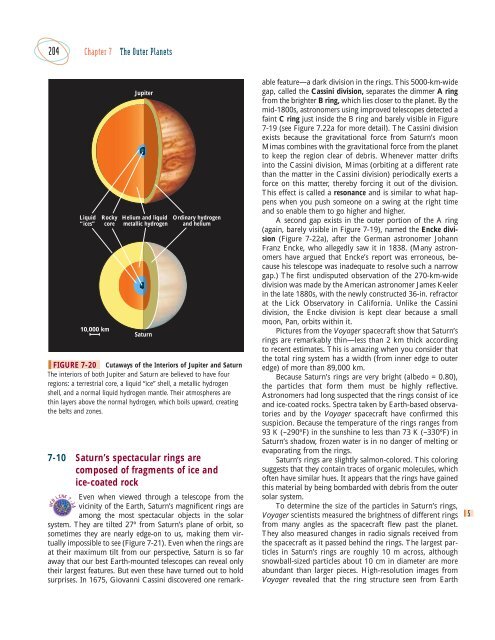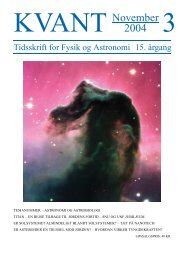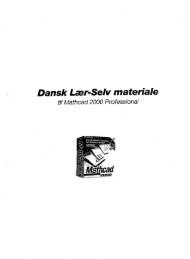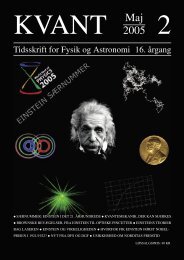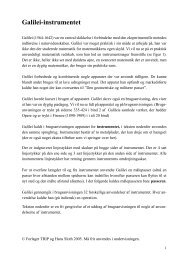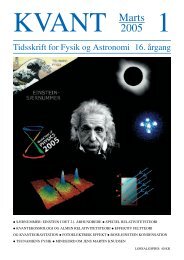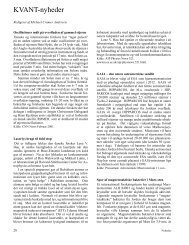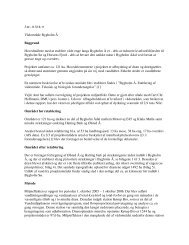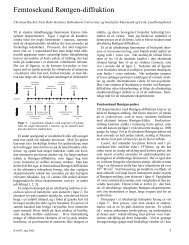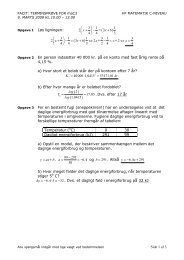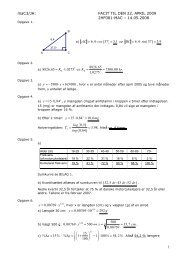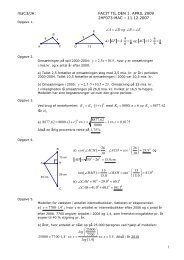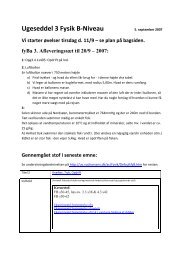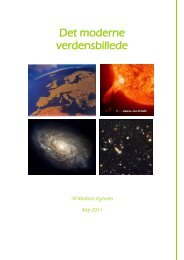Chapter 7 The Outer Planets
Chapter 7 The Outer Planets
Chapter 7 The Outer Planets
You also want an ePaper? Increase the reach of your titles
YUMPU automatically turns print PDFs into web optimized ePapers that Google loves.
204 <strong>Chapter</strong> 7 <strong>The</strong> <strong>Outer</strong> <strong>Planets</strong><br />
7-10 Saturn’s spectacular rings are<br />
composed of fragments of ice and<br />
ice-coated rock<br />
Even when viewed through a telescope from the<br />
vicinity of the Earth, Saturn’s magnificent rings are<br />
among the most spectacular objects in the solar<br />
system. <strong>The</strong>y are tilted 27º from Saturn’s plane of orbit, so<br />
sometimes they are nearly edge-on to us, making them virtually<br />
impossible to see (Figure 7-21). Even when the rings are<br />
at their maximum tilt from our perspective, Saturn is so far<br />
away that our best Earth-mounted telescopes can reveal only<br />
their largest features. But even these have turned out to hold<br />
surprises. In 1675, Giovanni Cassini discovered one remark-<br />
WEB LINK 7.18<br />
Liquid<br />
“ices”<br />
10,000 km<br />
Rocky<br />
core<br />
Jupiter<br />
Helium and liquid<br />
metallic hydrogen<br />
Saturn<br />
Ordinary hydrogen<br />
and helium<br />
FIGURE 7-20 Cutaways of the Interiors of Jupiter and Saturn<br />
<strong>The</strong> interiors of both Jupiter and Saturn are believed to have four<br />
regions: a terrestrial core, a liquid “ice” shell, a metallic hydrogen<br />
shell, and a normal liquid hydrogen mantle. <strong>The</strong>ir atmospheres are<br />
thin layers above the normal hydrogen, which boils upward, creating<br />
the belts and zones.<br />
able feature—a dark division in the rings. This 5000-km-wide<br />
gap, called the Cassini division, separates the dimmer A ring<br />
from the brighter B ring, which lies closer to the planet. By the<br />
mid-1800s, astronomers using improved telescopes detected a<br />
faint C ring just inside the B ring and barely visible in Figure<br />
7-19 (see Figure 7.22a for more detail). <strong>The</strong> Cassini division<br />
exists because the gravitational force from Saturn’s moon<br />
Mimas combines with the gravitational force from the planet<br />
to keep the region clear of debris. Whenever matter drifts<br />
into the Cassini division, Mimas (orbiting at a different rate<br />
than the matter in the Cassini division) periodically exerts a<br />
force on this matter, thereby forcing it out of the division.<br />
This effect is called a resonance and is similar to what happens<br />
when you push someone on a swing at the right time<br />
and so enable them to go higher and higher.<br />
A second gap exists in the outer portion of the A ring<br />
(again, barely visible in Figure 7-19), named the Encke division<br />
(Figure 7-22a), after the German astronomer Johann<br />
Franz Encke, who allegedly saw it in 1838. (Many astronomers<br />
have argued that Encke’s report was erroneous, because<br />
his telescope was inadequate to resolve such a narrow<br />
gap.) <strong>The</strong> first undisputed observation of the 270-km-wide<br />
division was made by the American astronomer James Keeler<br />
in the late 1880s, with the newly constructed 36-in. refractor<br />
at the Lick Observatory in California. Unlike the Cassini<br />
division, the Encke division is kept clear because a small<br />
moon, Pan, orbits within it.<br />
Pictures from the Voyager spacecraft show that Saturn’s<br />
rings are remarkably thin—less than 2 km thick according<br />
to recent estimates. This is amazing when you consider that<br />
the total ring system has a width (from inner edge to outer<br />
edge) of more than 89,000 km.<br />
Because Saturn’s rings are very bright (albedo = 0.80),<br />
the particles that form them must be highly reflective.<br />
Astronomers had long suspected that the rings consist of ice<br />
and ice-coated rocks. Spectra taken by Earth-based observatories<br />
and by the Voyager spacecraft have confirmed this<br />
suspicion. Because the temperature of the rings ranges from<br />
93 K (–290ºF) in the sunshine to less than 73 K (–330ºF) in<br />
Saturn’s shadow, frozen water is in no danger of melting or<br />
evaporating from the rings.<br />
Saturn’s rings are slightly salmon-colored. This coloring<br />
suggests that they contain traces of organic molecules, which<br />
often have similar hues. It appears that the rings have gained<br />
this material by being bombarded with debris from the outer<br />
solar system.<br />
To determine the size of the particles in Saturn’s rings,<br />
Voyager scientists measured the brightness of different rings<br />
from many angles as the spacecraft flew past the planet.<br />
<strong>The</strong>y also measured changes in radio signals received from<br />
the spacecraft as it passed behind the rings. <strong>The</strong> largest particles<br />
in Saturn’s rings are roughly 10 m across, although<br />
snowball-sized particles about 10 cm in diameter are more<br />
abundant than larger pieces. High-resolution images from<br />
Voyager revealed that the ring structure seen from Earth<br />
5


